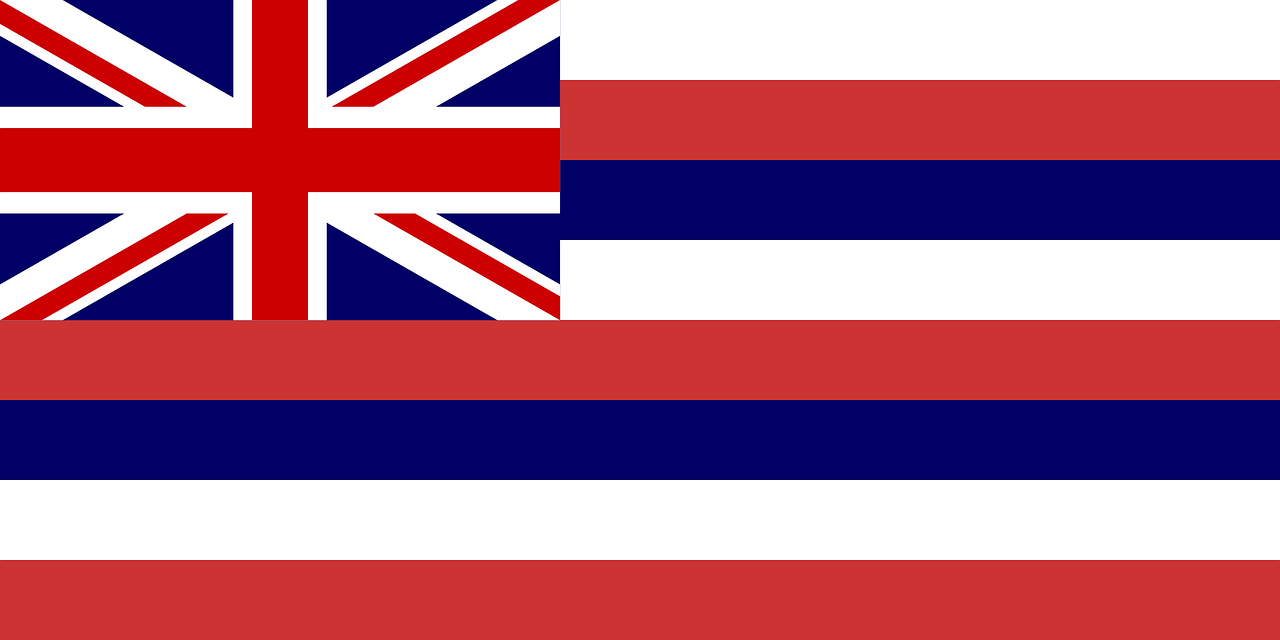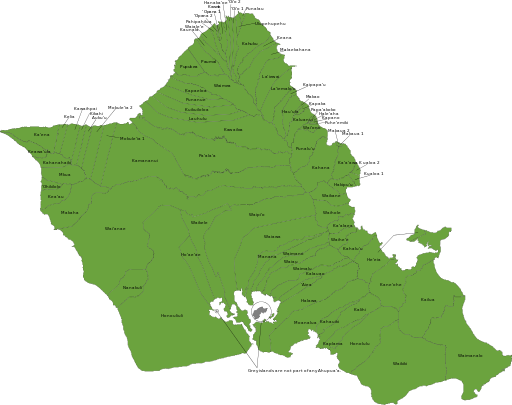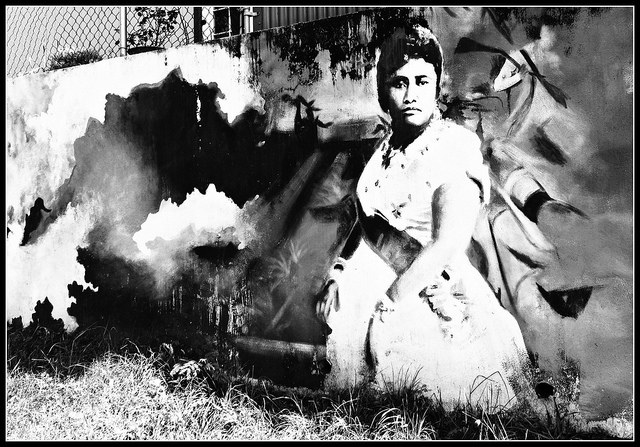Native Hawaiian Blood Quantum and Land Rights
Hawaii - Big Island
Jacqueline Boger
Introduction

There has been much study about the importance of home land and the connection Indigenous peoples have to their home lands. “In the specific case of Hawai’i, understandings of health are central to Native Hawaiians’ struggle for the restoration of their land, identity, and sovereignty.” (McMullin, pg. 12) Colonialism has been the cause of the displacement of many Indigenous groups from their home lands, this includes Native Hawaiians. There are many complications that came with the relocation of Native Hawaiians, most specifically arguments over who the land belonged to and who has claim to Native Hawaiian lands. This brought about the Hawaiian Homes Commission Act in 1920. The HHCA defines Native Hawaiians as, “. . .individuals having at least 50 percent Hawaiian blood,” (Department of Hawaiian Home Lands, Hawaii.gov), and gives 99-year homestead leases to these people with a yearly charge of $1. This change seems like an incredible offer for Native Hawaiians, but it can be harmful for those who aren’t of high enough blood quantum.
History of Native Hawaiian Removal

In 1778, when Captain Cook first landed in Hawaii, the lands were split amongst Native Hawaiians in a complex manner. The land was split into large
units called ahupuaas, which, ideally, stretched from the ocean to the mountains. These units were controlled hierarchically, “[a]t the top, a chief
controlled each ahupuaa; land agents (konohiki) and subchiefs subordinate to the chief controlled smaller amounts of land; and at the bottom of the
hierarchy common farmers. . .” (Levy, pg. 849) The redistribution of the lands after the death of the chief was also complex because it didn’t necessarily
go to a successor, there was often war that allowed for new chiefs and new distributions of the land. When Europeans arrived in Hawaii, this greatly
changed Native Hawaiians ways of life. Hawaii started to become a supply stop for many European travelers because of it’s surplus agriculture that
their method of landholding created. Becoming a new stop also allowed for Hawaii to become part of international trade, which altered the economy
on the islands.
The economy went from one that existed to maintain life on the islands to one that existed to take part in trade. This new economy
made it desirable for the landholdings to be stable in their ownerships, a war between chiefs could disrupt trade. This led to a policy change,
under the protection on the English Kamehameha III’s council made a policy called, “the Law of 1825, which allowed chiefs to keep their lands upon
a king’s death.” (Levy, pg. 850). Also, during this time, Western settlers were entering Hawaii and were being given lands by the king or chiefs
altruistically for services, which were then turned into plantations. This continued and went even further as foreign settlers attempted to give
land to other foreigners without the king’s permission. This led to much reform of the policies that dictated land governance, but it was fruitless.
In 1840, a constitution was written that made the rules for Westerner’s land stricter and made it clear that the king’s land couldn’t be given away
without his permission, it also attempted to address the situation of many Native’s leaving their lands and hopefully entice them to return.
Native Hawaiians had started leaving their lands to move into larger cities and foreigners were profiting from Native Hawaiian lands. Kamehameha III kept
instilling policies throughout the next three years to attempt to calm the disputes that were occurring between Westerners on the foreign land and
Native Hawaiians, who were leaving because of the Western presence. In 1843 was when the first change of government occurred, which led to Westerners’
being in power. Carysfort, one of the many warships that traveled to Hawaii came and took over the government for a few months, Britain learned of
this a forced Carysfort to leave, but it’s presence had instilled much fear and a realization that Western forces were allowing Hawaii to remain
independent. Later in 1845, Hawaiian government decided to make the Land Commission, which would give the government all power in deciding who had claims
to the land. This caused further division of the land and ended in many acres of land being taken from Native Hawaiians. By the 1880s, Westerners have
taken economic control of the Islands and were going for political control. They formed the Hawaiian League and claimed to be ridding the government of
corruption, but in reality, they were reducing the power of the king. The group then stage a coup, in 1887, and forced the king to create a new constitution,
called the “Bayonet Constitution.” This gave Western landowners more power than the king in regard to land, it also gave Westerners the power to become upper
class legislators because they were literate and because of their wealth could vote, unlike most Native Hawaiians.

Later, in 1893, Queen Liliuokalani threatened to create a new constitution to reinstate her power, but this did nothing to help the Hawaiian government.
Angry Westerners banned together and fought against her even after she had obviously given up on her plan. Americans sent marines and because Queen Liliuokalani
did not wish to see unnecessary bloodshed she stepped down. Hawaii became the Republic of Hawaii and it created a constitution, in which, Westerners had all
claims to Native lands and they were available for purchase to Westerners. Although, the Land Act of 1895 did allow some benefits for Native Hawaiians in that
it allowed some of the Crown lands to be homesteads, but only to Hawaiians and Westerners and that Native Hawaiians were provided 999-year leases for very small
amounts of land without cost. It wasn’t much, but it was something. These policies remained even when finally, in 1898 Hawaii was annexed into the United States.
The main problem with these policies is that in the 1920s and 30s the long-term leases for much of the Crown lands was to expire, but because Hawaiians were seen
as a dying race, “[t]he Hawaiian Protective Association suggested that Native Hawaiians be ‘rehabilitated’ by removing them from the influences of city tenements
and returning them to the land.” (Levy, pg. 865), which brought about the Hawaiian Homes Commission Act of 1920. The HHCA set aside land for Native Hawaiians and
removed all sugar lands from homesteading, that way it could be used by the government to make a profit; this Act remains in place today.
Hawaiian Homes Commission Act
The Hawaiian Homes Commission Act was made July 9, 1921, passed by President Warren Harding. This Act is a homesteading program, designed to rehabilitate Native Hawaiians. In the HHCA, Native Hawaiians are defined as anyone with at least fifty-percent Hawaiian blood. If Natives apply under this stipulation they can be given 99-year leases for a cost of one dollar a year. “Homestead leases are for residential, agricultural, or pastoral purposes. . . The intent of the homesteading program is to provide for economic self-sufficiency of native Hawaiians through the provision of land.” (Department of Hawaiian Home Lands, Hawaii.gov) The HHCA also provides financial support through loans for projects like building homes, replacing/repairing homes, developing farms or ranches, as well as water systems for farmers and ranchers.
Blood Quantum and Land Rights
Blood quantum is difficult in many ways. Blood quantum is how the government and Indigenous communities determine the indigeneity of a person. It is commonly used to determine if people are of Native American ancestry and if they belong to a specific tribe or if they can claim that they do. It’s helpful, in ways, such as keeping Native lands away from those it doesn’t belong and making sure it goes to who it was promised to, but there are complications. The real difficulty with blood quantum comes from Indigenous perspective. Someone who may be under the blood quantum in the government’s eyes, may have grown up on Native land, living an Indigenous lifestyle, and may even claim that identity, but blood quantum may say that they have no right to that identity. For Native Hawaiians this means not having claim to land that might have been their ancestors because they aren’t fifty percent Native. This percentage is high, especially considering how long-ago foreigners started moving into Hawaii. The likelihood of no Native Hawaiians intermarrying, or at least have biracial children is slim and this means that these offspring may not be able to lay claims to ancestral lands, even though it should be theirs.
Importance of Homeland

Homeland is extremely important to many Indigenous groups, this doesn’t exclude Native Hawaiians. The importance may be lost on many Westerners, but Indigenous communities made their lives off their homeland and then had it taken from them. Their land was their livelihood and it would’ve continued to be so if it hadn’t been for colonialism. Native Hawaiians’ relations to their homeland is so important that books have been written about it. Juliet McMullin wrote a fantastic ethnography about Native Hawaiian health in relation to land, food, and identity. McMullin describes the importance of Native land in many ways and who it was important to including, “[t]raditional healer. . .require access to forested areas to gather their medicinals.” (McMullin, pg. 117), and others. She discusses how a limited access to land doesn’t allow for Natives to collect food like they used to, so they have started consuming foods available in their markets, the majority of which are not healthy foods, or traditional foods. All of these points intersect and so many more when distinguishing Native Hawaiian identity and their perspective on health.
Resolutions
There are no quick and easy solutions to these problems, but there are ways to improve how the government decides where Native homelands go. They could lower the required blood quantum, to something more realistic, considering that Westerners presence in Hawaii has been since the early 1800s, but this may be too lenient for some. Another would be to take the time to look over each claim case by case. If someone doesn’t have the appropriate blood quantum, perhaps they can claim land based on lineage. If they can show that they came from the Islands and never left, or that they’re family/ancestors who had the appropriate blood quantum had, had claims to that land or Native lands at some point. The strictness of blood quantum laws and land rights must be looked in to, the government cannot claim to be wanting to help rehabilitate some Native Hawaiians and not others, because blood quantum doesn’t necessarily shape identity and those who may not have appropriate blood quantum may need, or deserve, rehabilitation just as much as those who do.
Resources
Department of Hawaiian Home Lands. “Hawaiian Homes Commission Act” State of Hawaii. 2018. http://dhhl.hawaii.gov/hhc/laws-and-rules/
Levy, Neil M. “Native Hawaiian Land Rights.” Berkeley Law Scholarship Repository. Vol. 63. 1975. https://scholarship.law.berkeley.edu/cgi/viewcontent.cgi?referer=https://scholar.google.com/&httpsredir=1&article=3093&context=facpubs
McMullin, Juliet. “The Healthy Ancestor: Embodied Inequality and the Revitalization of Native Hawaiian Health.” Left Coast Press, Inc. 2010. https://books.google.com/books?isbn=1315418312
Image Sources
Image 1 - Clker-Free-Vector-Images. Hawaiian Flag. Accessed 9 April 2018.
https://pixabay.com/en/flag-hawaii-state-stripes-28560/
Image 2 - Sn1per, Hawaiian Government. Accessed 9 April 2018.
https://commons.wikimedia.org/wiki/File:Ahupuaa_of_Oahu.svg
Image 3 - Mark Faviel. Accessed 9 April 2018.
https://www.flickr.com/photos/markfaviell/6840148330/in/photolist-bqrxMU-XdMoVu-kqsKfo-8fpnVp-8bi9AV-7djyQv-bU953c-anP7SX-5kUvcT-5uiAq2-ptXhNH-agqe1Z-a6oVBi-c9dTVd-bV4ANA-Y98qrb-Ydj9Vk-pRRnyr-p85VyK-bXck5X-cqBwe-5m9EVz-4NxCZf-5mdTwE-4t4iYj-mBGMCY-oQABgC-dwA3WM-bamqmi-pu2D7D-brQqKv-X9Y1V1-oQAdcU-96jmG1-gyfFMi-a8LiZG-5mtepS-bnu9pL-5YzezM-5mte17-cZMx9G-nfYDvd-caQb9N-9jny37-eM5wbA-agsY17-ogwm6r-64ZNir-7FXSwL-4nrQoG
Image 4 - Canon EOS-1ds Mark II. Accessed 11 April 2018.
https://pixabay.com/en/hawaii-mountains-sky-clouds-valley-209956/